The (Stephen) Long Covered Bridge, from Brownsville to Columbus (Indiana)
The year is 1840, and the townsfolk of Brownsville, Indiana, were dismayed that the newly constructed National Road was crossing the East Fork of the Whitewater River, just a few miles north of town. They engaged Stephen Long to construct a bridge for the town, and his patented Long Truss soon spanned the river… The year is 1993, and the same bridge now lies in Columbus, Indiana – with many miles in between at the end of an interesting journey.
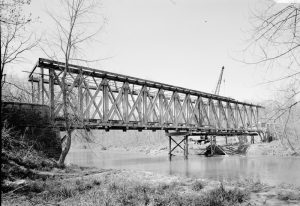
First Stop
In 1830, the National Road construction was alive and active in Indiana, with construction marching onward to the Mississippi River (although the road never made it that far). Brownsville, Indiana, townsfolk were “agitated” that the National Road had just constructed a bridge across the East Fork of the Whitewater River, two miles upstream. Fearing a loss of commerce, the town approached agents of Stephen Long, who was looking to promote his newly patented truss design. The design was “state of the art” for the 1830s. Chord member sizes were based on mathematical calculations, and diagonals were “wedged,” introducing an elementary form of pre-stressing. Both design insights were landmark innovations for the day. The bridge was successfully completed in 1840 and became locally known as the Wagon Bridge, and provided an immediate economic boom to the townsfolk of Brownsville.
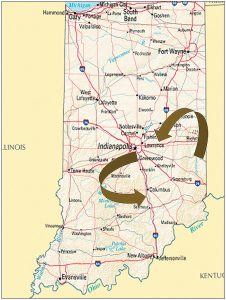
Second Stop – 75 Miles West
After careful dismantling, the (Stephen) Long Covered (Wagon) Bridge members were transported to Indianapolis, Indiana, and placed in storage for its intended destination, Eagle Creek Park – the largest recreational park in Indianapolis, featuring more than 1,400 acres of water and 3,900 acres of forest, and offering a wide variety of activities such as fishing, boating, hiking, and, at one time, a (planned) covered bridge enjoyment. An iconic painting of the Wagon Bridge was displayed in the park office for many years. Originally intended as a signature element in the park from the earliest planning stages in the 1970s, the Wagon Bridge was moved from Brownsville to Indianapolis. Ultimately, it was never rebuilt and laid in storage for many years before being relocated to Columbus, Indiana.
Third and Final Stop – 40 Miles South
After approximately twenty years in storage, the (Stephen) Long Covered (Wagon) Bridge made its final stop of a long, two-legged journey as it arrived in Columbus, Indiana.
An area once known as “Death Valley,” a flood-prone spit of land adjacent to the oxbow of the Driftwood River, underwent a slow transformation starting in the 1960s. In over 30 years, the former industrial area along the western edge of Columbus, Indiana, was transformed into an 85-acre riverfront park, appropriately named Mill Race Park. The transformed setting is now recognized as one of the top 100 parks in the nation for design, reputation, and accessibility. As a testament to the collaborative spirit of design with many contributions from the community, the park has evolved into a community destination featuring an 84-foot observation tower, people [walking] trails, picnic shelters, playground equipment, horseshoe pits, basketball courts, an amphitheater, the creation of two lakes and… the relocation of the now [2022] 182-year-old Long Covered (Wagon) Bridge… completing its journey from Brownsville, Indiana, temporarily to Indianapolis, and then to its present location.
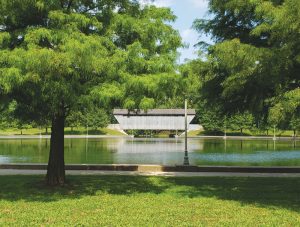
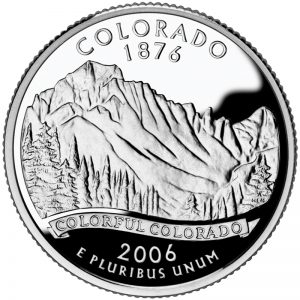
Biography – Stephen (Harriman) Long (1784-1864)
A remarkable engineer with a remarkable career. A snapshot of his wide range of engineering practice and accomplishments follows.
- Graduated from Dartmouth College in 1809.
- Upon graduation, taught mathematics in New Hampshire and Pennsylvania.
- Joined the Corps of Engineers as a second lieutenant in 1814 and served as assistant professor of mathematics at West Point.
- Became a Major (in 1816) and was assigned the responsibility of Topographical Engineer, where he led five expeditions (1817-1823) through the Upper Mississippi Valley and the borderlands with Canada. His explorations included the upper Mississippi River and its tributaries, Missouri, Platte, and South Platte Rivers, the eastern range of the Rocky Mountains in Colorado, and a considerable part of the Arkansas River basin.
- Assigned by the Department of War (in the late 1820s) to serve as consulting engineer for the Baltimore and Ohio Railroad Company, where he came to be regarded as an expert in railroad engineering.
- Became the chief engineer for the Atlantic and Great Western Railroad.
- Served as a consulting engineer for a number of other railroad companies.
- Received (in 1829) his first (of many) patents for his work on railroad steam locomotives.
- Authored a publication entitled the Rail Road Manual (1829), which presented tables that eliminated the need for field computations.
- Published (in 1830) a booklet entitled Description of the Jackson Bridge [near Baltimore, Maryland] Together with Directions to Builders of Wood or Frame Bridges (which was the basis for his 1830 patent).
- Received patents in 1830 and 1839 for pre-stressing the wooden diagonal trussed members in covered bridges, leading to many covered bridge designs in New England and the mid-west.
- Unsuccessfully, claimed patent infringement when Howe patented his truss concept. (The Howe Truss patent was based on post-tensioning vertical rods, alternatively, accomplishing and improving on the goals of Long’s patent.)
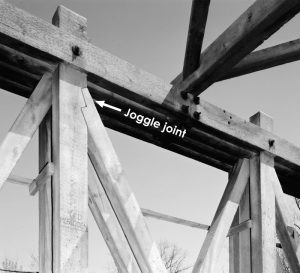
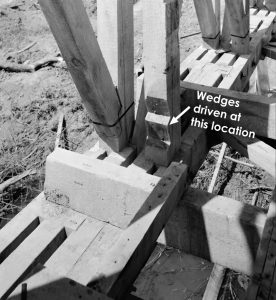
The 1830 Patent of the Long Truss
The 1830 patent of Stephen Long was remarkable in two features.
- The patent provided a series of tables that rationally proportioned the upper and lower chords based on engineering mechanics principles, much as one would compute the stresses in the upper and lower flanges of a wide flange beam. This is one of the earliest examples of a rational approach in an era where handed-down craftsmanship principles were the norm.
- The diagonals were of simple fabrication with joggle joints for ease of installation. However, the most important feature was the use of wedges, which were driven along the joggle lines of the lower end of the diagonals. During driving, the wedges induced compressive stresses in the diagonals – an early form of pre-stressing. Without a clear understanding of force flow in an internally indeterminate system, the wedge-induced pre-stressing, in a broad sense, recognized that live loading conditions would introduce tensile stresses in certain diagonals that would otherwise loosen unstressed diagonal members at their joints unless a conscious strategy was employed to render the “…truss frames … stiff and unyielding.”■
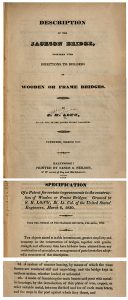
We are excited to see a lessening of the pandemics’ s impact on our authors and advertisers and expect to have more normal page counts in the future. As a result, we have taken the opportunity to showcase the work that other organizations do in supporting S.E.s. It is a pleasure to have these organizations add to STRUCTURE’s knowledge base. If your organization would like to submit an article proposal, please contact Chair@STRUCTUREmag.org.
This article is courtesy of the Engineers’ Society of Western Pennsylvania, initially published in the Pittsburgh Engineer in June 2021. It is reprinted with permission.
